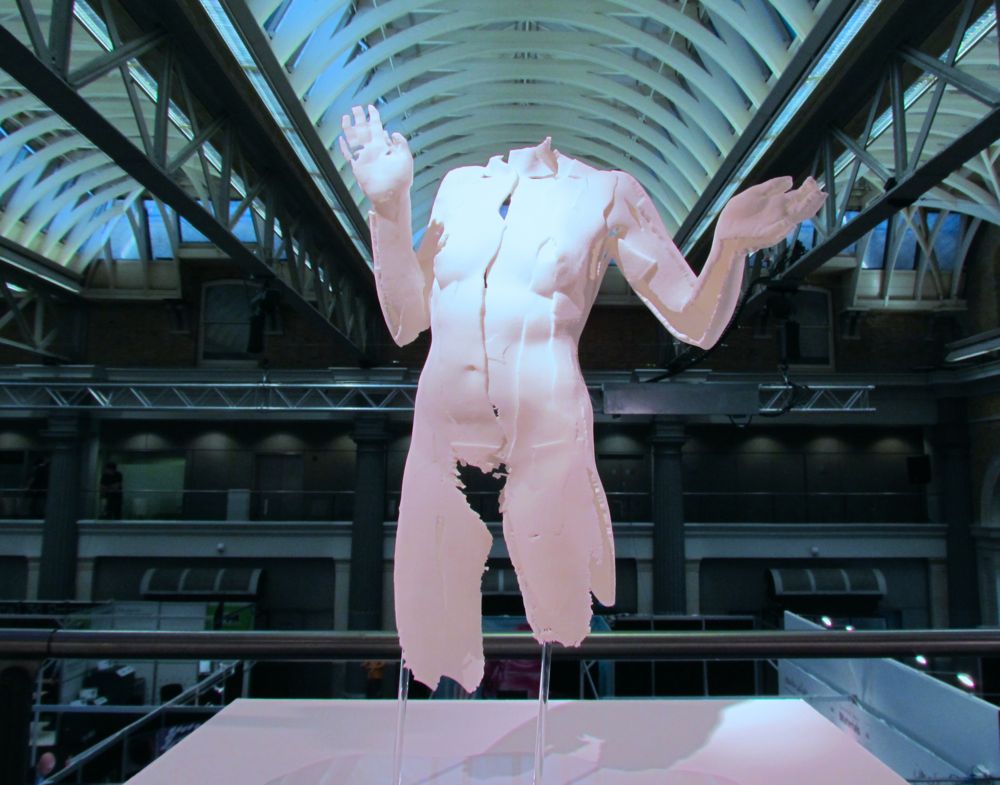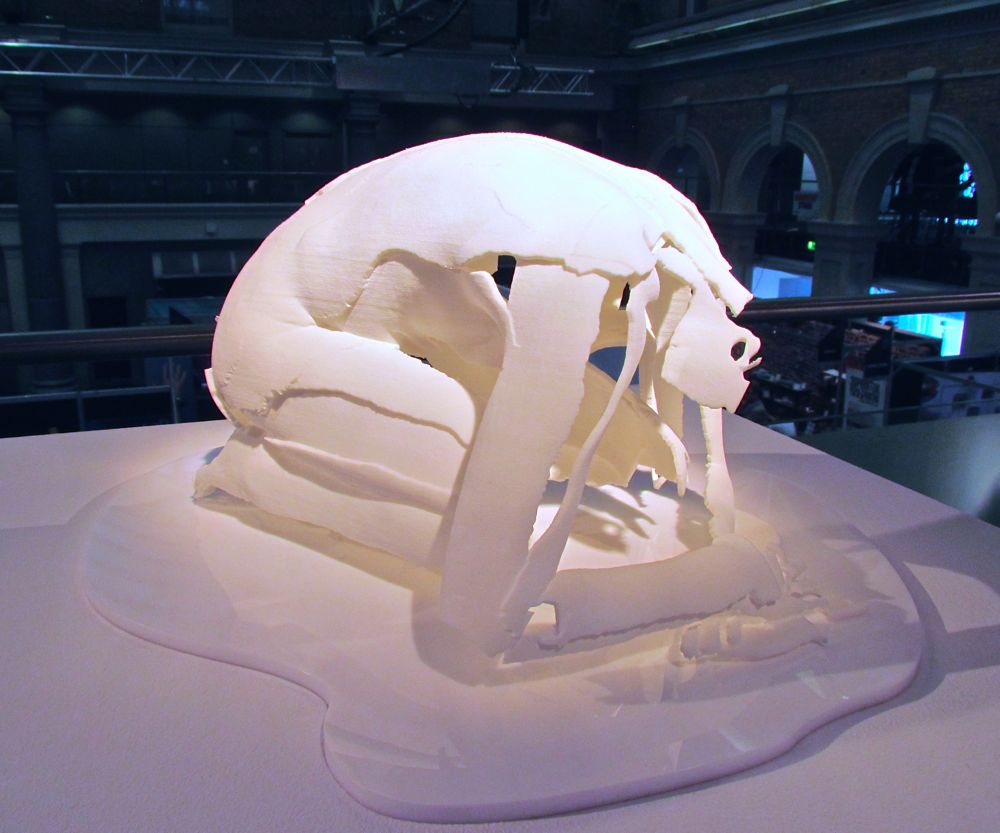This week’s selection is Sophie Kahn’s eerie Prodromes series.
There are three items within Ms. Kahn’s Prodromes series, but all use the same approach: a partial and broken human body’s surface.
The works are inspired by an actual historical scenario:
At the Salpêtrière hospital in Paris, Dr. Jean-Martin Charcot invented a series of poses, which he claimed were typical of the stages of an attack of hysteria. Kahn was struck by the idea of technological representation as a fraught transaction, and by the hubris involved in using technology to codify something as invisible as madness.
So, she created them in her studio with her own body and a 3D laser scanner. She then sculpted and edited the 3D files and 3D printed the results. The final fragmentary sculptures suggest a damaged body undergoing a process of deconstruction – or reconstruction.
Two other sculptures make up the collection beyond the pose above and at top. The feeling of damage is easily conveyed by the pose and ragged surface construction.
We particularly like this work because of the irony: a 19th century neurologist used illustrated poses to identify madness, while a 21st century artist uses 3D printed poses to identify the madness of the 19th century neurologist.
Via Sophie Kahn



